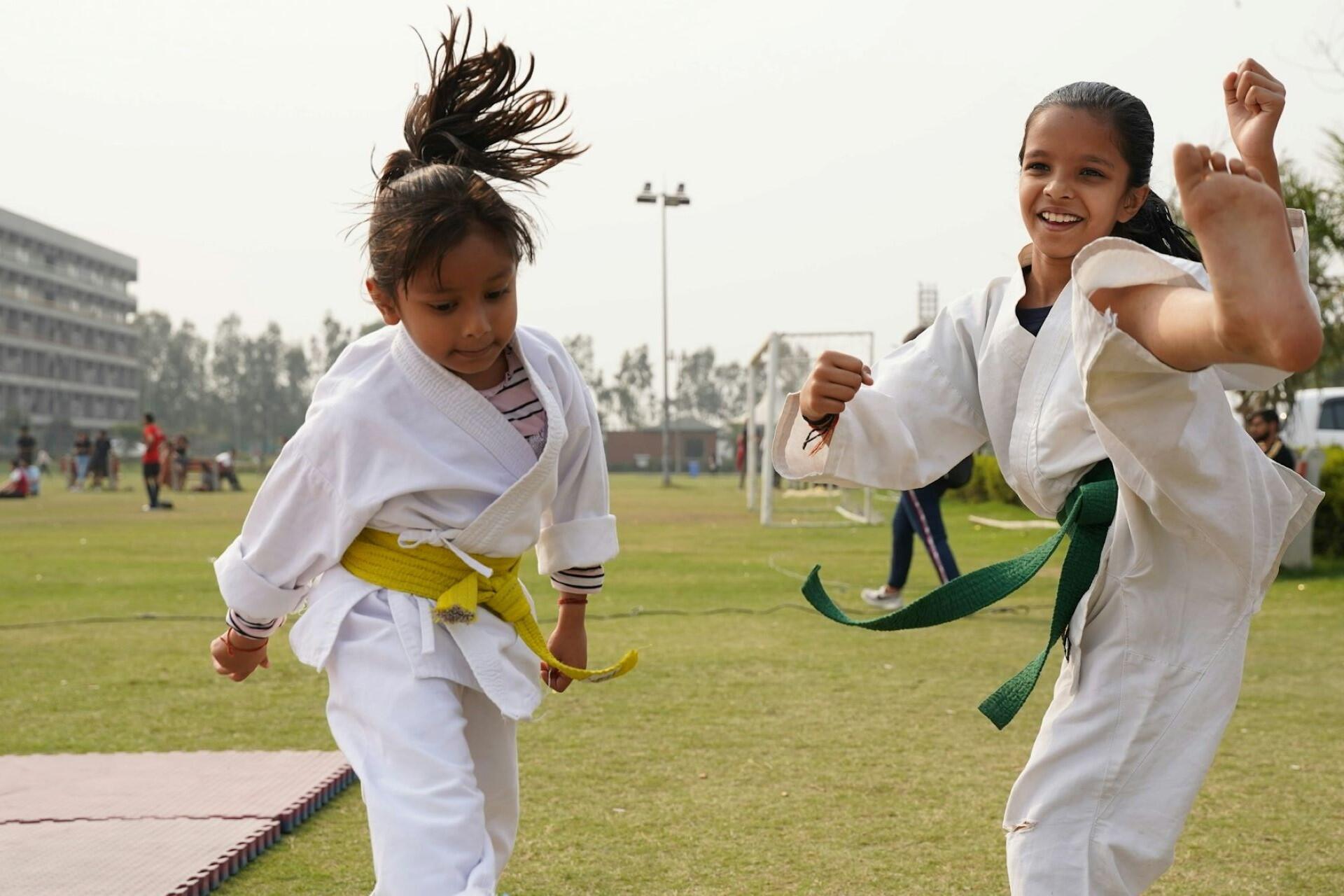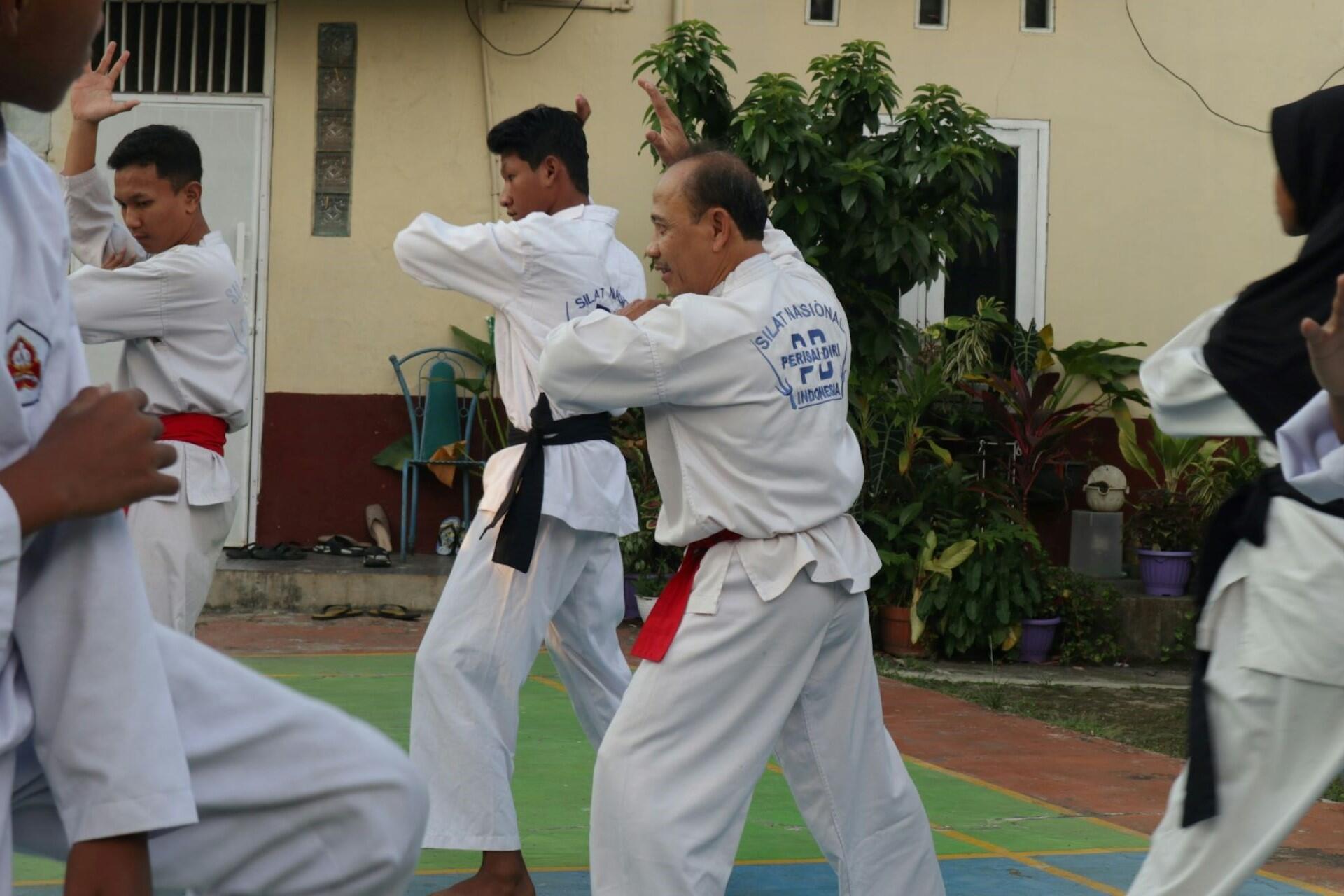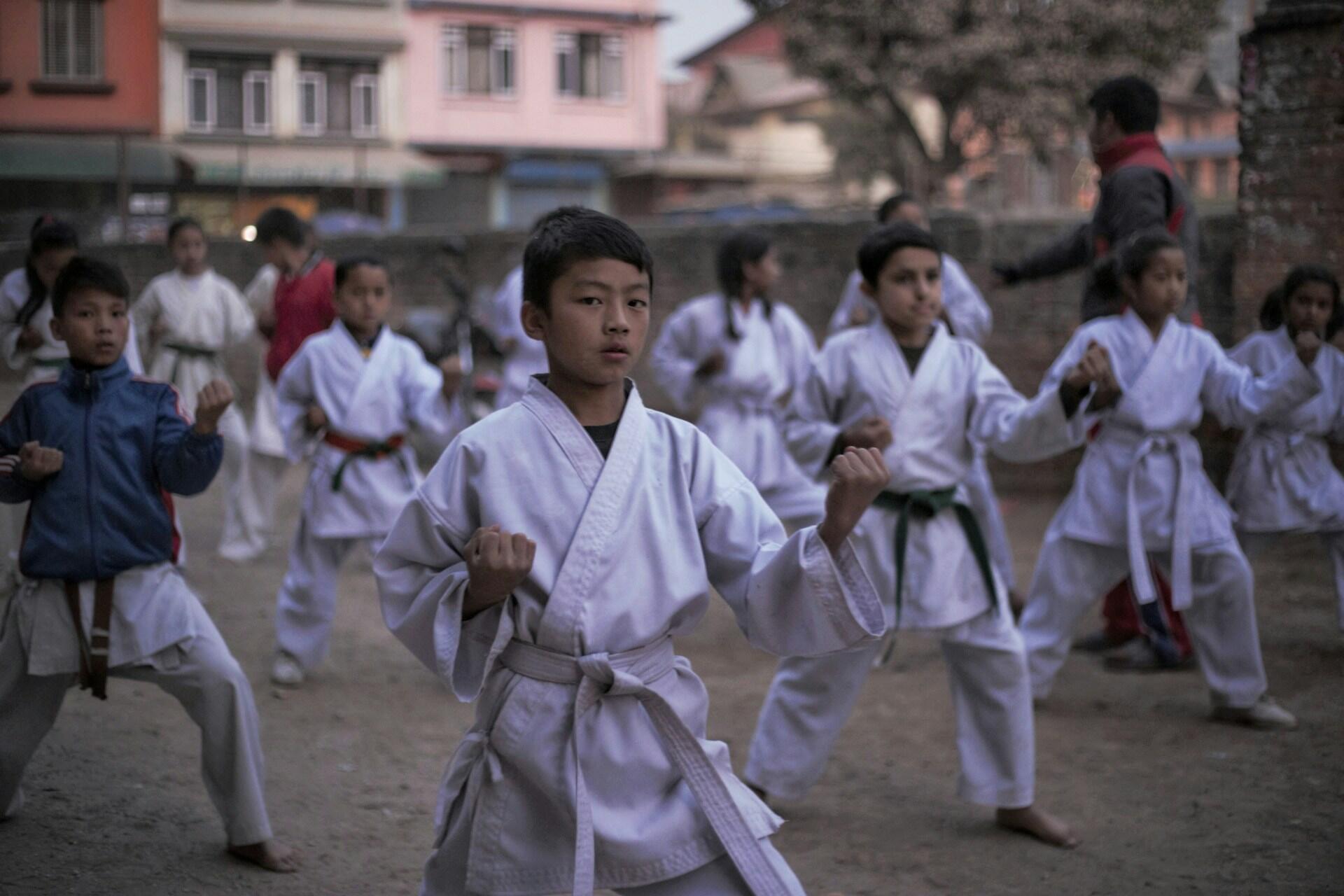No matter your age, martial arts are great for discipline, confidence, and self-defence. They can provide structure for both beginners and children, and many beginner martial arts offer a safe, motivating path into training. Here, we'll look at the various types of martial arts out there and which are best suited for novices of all ages like karate, taekwondo, judo, boxing, BJJ, and even MMA.
| Style | Best For | Why It's Good |
|---|---|---|
| Boxing | Adults and beginners seeking fast, effective training | Straightforward techniques, excellent cardio, and foundational striking skills |
| Karate | Children, beginners, and adults interested in structured progression | Strong discipline, belt system, and balanced training |
| Brazilian Jiu-Jitsu (BJJ) | Smaller individuals, kids needing confidence, and long-term development | Focuses on leverage and control; practical for all body types |
| Taekwondo | Children and teens, especially those with high energy | Dynamic kicking, Olympic sport structure, and engaging progression |
| Judo | Kids and adults preferring non-striking martial arts | Teaches balance, throws, and control; safe and widely taught |
| MMA (Mixed Martial Arts) | Teens and adults seeking full-body, cross-disciplinary training | Combines striking and grappling; good for real-world and fitness |

What Are the Best Martial Arts for Beginners?
Beginners can feel overwhelmed by martial arts, especially given the many different styles.
How do you decide to focus on striking, grappling, or a hybrid blend of martial arts? Which are best for people who've never done any other martial arts before?
The best martial arts for absolute beginners are those with a clear structure, accessible techniques, and a supportive training environment.

Prioritise styles focusing on building balance, coordination, and awareness to improve your fitness and self-confidence.
Popular martial arts for beginners include:
- Boxing: Great for learning basic strikes, footwork, and self-defence
- Karate: Offers structure, discipline, and a strong emphasis on personal development
- Brazilian Jiu-Jitsu (BJJ): Excellent for body control, ground defence, and smaller individuals
- Taekwondo: High-energy and fun, with a focus on kicks and flexibility
- Judo: Teaches how to use an opponent’s force against them; ideal for control and confidence
Look for a school or class that welcomes new students, explains techniques clearly, and doesn’t pressure you to “prove” anything on day one. Everyone starts somewhere, so your first goal is just to keep showing up.
Best Martial Arts for Adults: Starting Your Journey Later in Life
What about adults looking for a new hobby or a way to exercise? While you're never too old to get started with any martial art, there are important considerations, especially for older debutants or those with past injuries or health concerns.
Martial arts for adult beginners should be focused on safety, gradual progression, and usefulness in the real world. Look for different martial arts styles that can be done without peak fitness at first.
Here are our recommendations for beginner-friendly martial arts for adults:
Boxing
Focus
- Hand strikes, footwork, cardio
Why it’s great
- Straightforward techniques, fast fitness results
Good for
- Adults wanting a high-intensity workout and practical self-defence
Brazilian Jiu-Jitsu (BJJ)
Focus
- Grappling, ground control, submissions
Why it’s great
- Uses leverage over strength, great for smaller or older beginners
Good for
- Adults looking for long-term skill-building and full-body fitness
Karate
Focus
- Strikes, blocks, forms (kata), discipline
Why it’s great
- Strong philosophical foundation, structured progression
Good for
- Adults seeking balance between tradition and fitness
Judo
Focus
- Throws, takedowns, control
Why it’s great
- Emphasises technique and timing over brute strength
Good for
- Those who prefer non-striking styles and full-body control
Start slow, focus on form, and don’t compare yourself to younger or more advanced students. Progress in martial arts is profoundly personal and incredibly rewarding with consistency.
Kids Martial Arts: Building Skills, Confidence, and Discipline
What about younger beginners?
While martial arts offers plenty of benefits for kids, you must choose the right style or discipline for your child.
Martial arts can be a positive outlet for a child's boundless energy, a good way to build confidence or a structured hobby that teaches them discipline and respect.
Kids' martial art classes are always a good choice, but not every style is right for every child, even though most styles offer classes for children.
Benefits of Kids Martial Arts Training
- Discipline and Respect: Bowing, listening, and following rules are built into every class
- Self Defence: Kids learn how to avoid danger and protect themselves if necessary
- Fitness and Motor Skills: Improves balance, flexibility, coordination, and posture
- Confidence and Focus: Boosts attention span, emotional control, and self-esteem
Most schools offer beginner martial arts classes for kids as young as 4, with programs often divided by age (4-6, 7-10, preteens, etc.). Every child is different, so focus more on readiness and interest than age alone.

Top Martial Arts Styles for Kids
While most martial arts styles will likely offer classes for kids that differ from the adult sessions, certain styles are better suited for children.
Ideally, kids should have a balance of fun, safety, and rewards for progress. Styles with clear goals, like a belt system, are particularly useful as this can help keep kids motivated.

Taekwondo
Core Focus
- High-energy kicks, discipline, Olympic-style sparring
Why It’s Good for Kids
- Encourages flexibility, coordination, and confidence
Watch Out For
- Some programs can become overly sport-focused (less on self-defence)
Karate
Core Focus
- Strikes, blocks, kata (forms), personal development
Why It’s Good for Kids
- Strong structure, builds discipline and mental focus
Watch Out For
- May feel repetitive for very young or high-energy kids without variation
Judo
Core Focus
- Throws, pins, safe falling, control without striking
Why It’s Good for Kids
- Teaches balance, respect, and controlled physical contact
Watch Out For
- Some kids may find the lack of striking less exciting at first
Brazilian Jiu-Jitsu (BJJ)
Core Focus
- Grappling, ground control, submissions (taught age-appropriately)
Why It’s Good for Kids
- Boosts confidence in smaller children; teaches problem-solving
Watch Out For
- May take longer for kids to understand complex positions and techniques
Visit a few trial classes to see how instructors interact with students. The teaching style often matters more than the style itself.
Mixed Martial Arts for Beginners: Is It a Good Place to Start?
The increasing popularity of UFC and combat sports probably has you wondering whether mixed martial arts is suitable for beginners.
MMA is certainly fast, powerful, and exciting, but is it a good starting point for a beginner?
As the name suggests, mixed martial arts isn't a single discipline but a combination. This usually means boxing, Muay Thai, Brazilian Jiu-Jitsu, and wrestling, but there are many others.
It's intense and complex, and it's usually better suited to students with foundations in other striking or grappling-focused martial arts.
That said, you can find MMA gyms offering beginner programmes that gradually introduce students to the fighting styles commonly used in a safe and structured way.
Pros of MMA for Beginners
- You learn multiple disciplines at once
- High-intensity fitness benefits
- Prepares you for real-world self-defence scenarios
- Dynamic, engaging training sessions
Things to Consider
- Some classes may be too aggressive for total beginners
- You’ll need to learn striking and grappling at the same time
- Not ideal for kids unless they are in a very structured program
Choosing the Right Style: What’s Best for Your Personality and Goals?
While martial arts are recommended for beginners, the decision ultimately lies with you (or your child), your situation, fitness, and personality.
Certain styles are great for high-intensity workouts, while others are about structure, tradition, or self-defence.
There's a martial arts style for everyone, and here are some of our suggestions.
| Goal | Style | Reason |
|---|---|---|
| Build confidence and structure | Karate, Taekwondo | Focuses on discipline, clear progression, and personal growth |
| Real-world self-defence | Boxing, BJJ, Muay Thai | Practical techniques that apply in real-life situations |
| Improve fitness and lose weight | Kickboxing, Boxing, MMA | High-energy, full-body workouts for strength and stamina |
| Train with your child or as a family | Karate, Judo | Family-friendly, widely available, and age-inclusive classes |
| Mental focus and staying calm under pressure | Judo, BJJ, Aikido | Encourages control, breathing, and situational awareness |
| A fun and energetic first experience | Taekwondo, Kickboxing | Dynamic classes that are ideal for engaging new learners |
The best way to choose is to try a few beginner classes at local gyms or dojos. Most offer free trials or drop-in sessions. Nothing beats experience.
How to Get Started: First Class Tips for Beginners and Parents
So you've decided to take the plunge and start martial arts classes for you or your child.
It can initially feel intimidating, especially for adults who may have to see much younger people at a way higher level than themselves.
Everybody starts as a beginner, and don't worry about age. The important thing is to show up with an open mind and be willing to learn.
Here are our tips for getting the most out of your first classes.
What to Expect in Your First Class
- Warm-up and basic drills: Expect light cardio, stretching, and core techniques
- Introduction to etiquette: Bowing, listening, lining up properly. It's all part of the experience
- Beginner-friendly instruction: Most classes separate new students or offer modifications
- Friendly atmosphere: In a good school, you'll never feel pressure to prove anything
What to Wear and Bring
- Comfortable workout clothes if you don’t have a uniform yet
- Water bottle: Classes can be more intense than you expect
- Martial arts-specific gear: Your gym will tell you if you need gloves, a gi, or pads
- Notebook or app: Some students like to jot down new techniques or class advice

5 Things New Students (and Parents) Should Know
Of course, if you're not ready to join a class or would like tailored coaching, look for your preferred martial art style here on Superprof.
There are coaches and tutors all over the country and around the world who can help you. Many offer the first session for free, so you can always try a few before choosing the right one for you.















